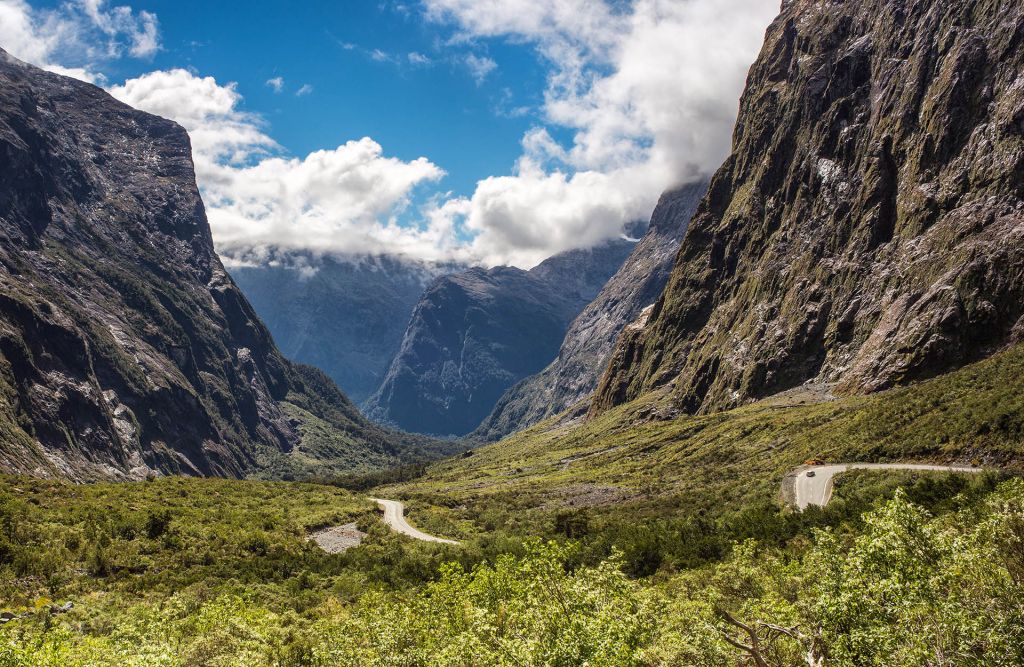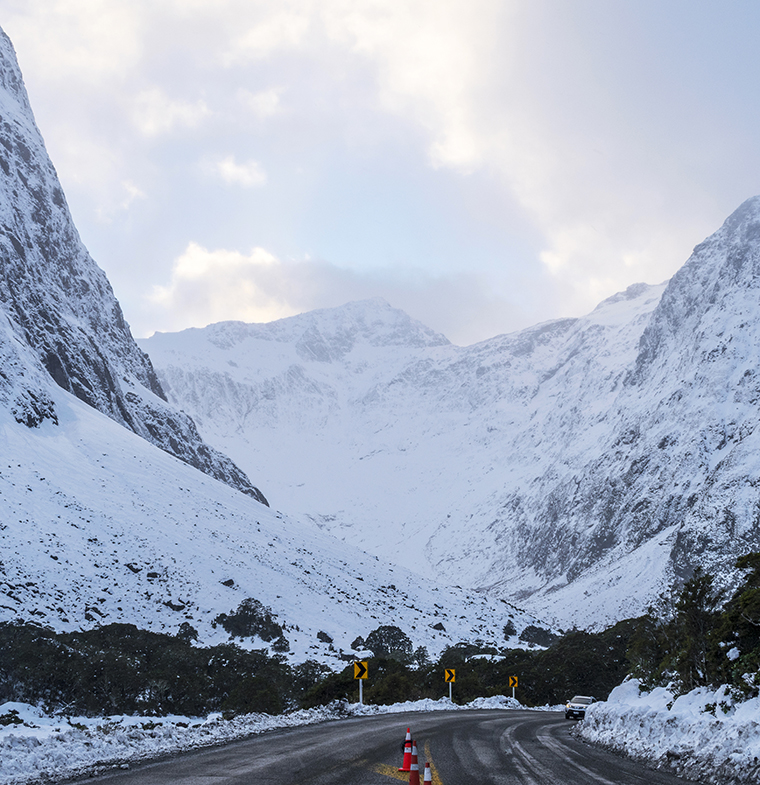Cleddau Valley
After passing through the Homer Tunnel, the Milford Road emerges into the impressive Cleddau Valley. Here you’ll find one of the most impressive photo stops along the Milford Road: The Chasm.
Bounded by steep mountain ranges on either side, this steep valley is named for the Cleddau River which flows through it. This, in turn, was named by early European explorer John Grono, drawing once again on his home country of Wales for inspiration. The River Cleddau is the body of water which flows into Milford Haven, the harbour after which Grono named Milford Sound.


Views in the Cleddau Valley
Straight after the tunnel, the road winds sharply down through the valley in a series of hairpin turns. The imposing granite mountain sides, skirted by native forest lower down, form an awe-inspiring landscape.
In the winter months, the area around the Homer Tunnel and Cleddau Valley is prone to avalanches. While the threat of a large scale avalanche can close the Milford Road, smaller avalanches can be seen further away from the road – an impressive reminder of nature’s power, as snow pours down the mountainside, carrying rocks and debris with it.
The risk of avalanche in the Cleddau Valley is one of the reasons you must prepare for the trip to Milford Sound. If you choose to drive yourself there, you’ll need snow chains for your vehicle and to obey all signs and signals you see along the way. This is another reason why choosing a Milford Sound day tour with an experienced local driver is a good idea.
Reaching Milford Sound
As the road descends into the valley for the last 16km (9.94mi) of the journey to Milford Sound, it flattens out, travelling alongside the river, blanketed on either side by native beech and podocarp forest. You’ll travel past some historic bridges from years gone by, and cross over the Cleddau River. Finally, at the end of the road, you’ll see beautiful Milford Sound in front of you, and the unmistakeable profile of Mitre Peak.


